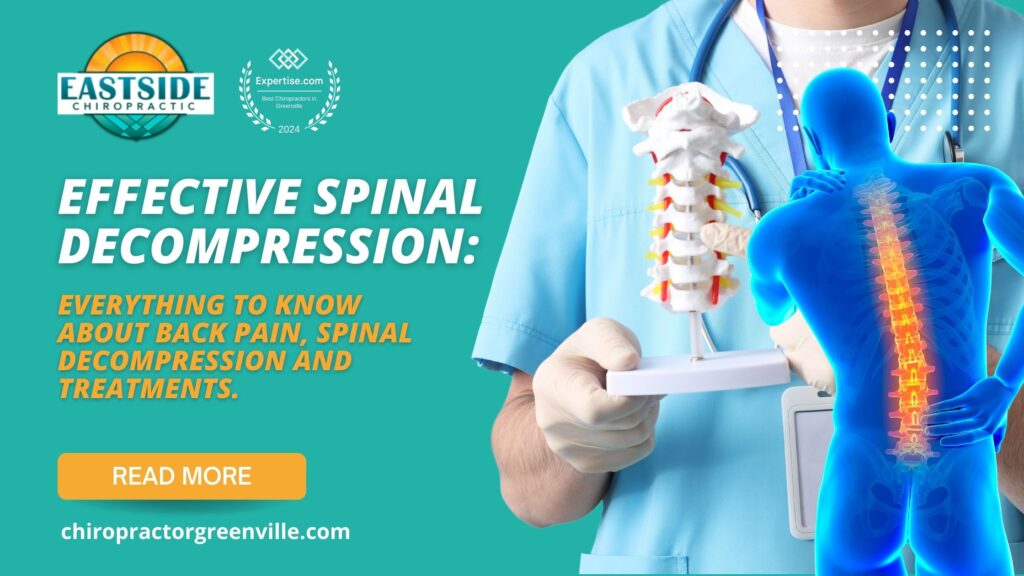The Ultimate Guide to Spinal Decompression Therapy: Risks and Side Effects in Taylors, SC
Introduction
If you’ve ever struggled with chronic back pain, spinal decompression therapy might seem like a beacon of hope. However, before diving in, it’s essential to understand the risks and potential side effects of this treatment. Let’s explore everything you need to know, especially if you’re considering spinal decompression at Eastside Chiropractic PA in Taylors, SC.
What is Spinal Decompression Therapy?
Spinal decompression is a non-surgical traction-based therapy that relieves back pain and helps heal intervertebral discs. Essentially, it involves gently stretching the spine to improve circulation and nutrient flow, aiding in the recovery of herniated or degenerated discs.
How Does Spinal Decompression Work?
Spinal decompression works by creating negative pressure within the spinal discs. Think of it like a vacuum effect that helps retract bulging or herniated discs and allows healing nutrients to flow into the damaged area. This is typically done using a specialized computer-controlled table that optimizes the process.
Benefits of Spinal Decompression Therapy
One of the primary appeals of spinal decompression therapy is significant pain relief and enhanced mobility without surgery. It’s a safe, non-invasive treatment that provides relief for conditions like herniated discs, sciatica, and degenerative disc disease.
Understanding the Risks of Spinal Decompression Therapy
While generally safe, spinal decompression comes with some risks. These may include muscle spasms, minor discomfort, or even a temporary increase in pain. It’s important to understand these risks before starting therapy, especially in Taylors, SC, where certain health conditions are more common in the population.
Evaluating Potential Side Effects
Common side effects are generally mild and temporary. After a session, you might feel soreness, similar to how you’d feel after a workout. Rarely, some people may experience worsened symptoms if the procedure isn’t performed correctly or if they have an underlying condition that wasn’t considered beforehand.
Who Should Avoid Spinal Decompression Therapy?
Not everyone is a good candidate for spinal decompression therapy. People with fractures, spinal tumors, advanced osteoporosis, or certain other spinal conditions should avoid this treatment. It’s crucial to consult with a healthcare professional to determine if this therapy is right for you.
Patient Experiences with Spinal Decompression in Taylors, SC
At Eastside Chiropractic PA, many patients have experienced positive outcomes from spinal decompression therapy. Patient testimonials often highlight relief from chronic pain and improved quality of life. However, results can vary, so always discuss your condition with your chiropractor.
Preparing for Your Spinal Decompression Session
Preparing for a spinal decompression session is easy. Your chiropractor will conduct an assessment to customize the treatment for your needs. Be sure to wear comfortable clothing and don’t hesitate to ask your chiropractor any questions about the process.
Post-Procedure Care and Tips
After your session, you may experience slight tenderness, but simple post-procedure care can help. Stay hydrated, avoid heavy lifting or strenuous activities for a few days, and communicate any discomfort to your chiropractor.
Choosing the Right Chiropractic Clinic in Taylors, SC
When choosing a clinic for spinal decompression, reputation is key. Eastside Chiropractic PA is known for its experienced chiropractors and personalized care. Reading reviews and visiting the clinic beforehand can help you decide if it’s the right fit for you.
Consulting with a Chiropractor
A thorough consultation with your chiropractor is essential. They can guide you through the potential risks, benefits, and expected outcomes. A good chiropractor will take the time to address your concerns and help you make an informed decision.
Comparing Spinal Decompression with Other Treatments
Spinal decompression is often compared to surgical and medicinal treatments for back pain. It’s less invasive and more cost-effective than surgery, and unlike medication, it targets the root of the problem rather than just managing symptoms.
Frequently Asked Questions About Spinal Decompression
As you explore spinal decompression therapy, you might still have questions. That’s perfectly normal! In the FAQs below, we’ll answer some of the most common questions about this therapy.
Conclusion
Spinal decompression therapy can be a game-changer for individuals dealing with chronic back pain. By fully understanding the risks and benefits, you can make a well-informed decision about whether this therapy is right for you. And remember, Eastside Chiropractic PA in Taylors, SC, is here to guide you throughout your journey to a pain-free life.
FAQs
What are the common side effects of spinal decompression?
Most patients experience mild discomfort or soreness after a session, similar to muscle soreness after a workout.
How often do complications occur with spinal decompression therapy?
Serious complications are rare. It’s always best to discuss any concerns with your chiropractor beforehand.
Is spinal decompression therapy suitable for everyone?
Not necessarily. Individuals with conditions like osteoporosis or spinal fractures should avoid this therapy.
What should I discuss with my chiropractor before beginning therapy?
Discuss your medical history, any current concerns, and your goals for therapy.
How can I reduce the risks associated with spinal decompression?
Following your chiropractor’s advice, preparing properly for your sessions, and sticking to post-procedure care instructions will help minimize risks.
